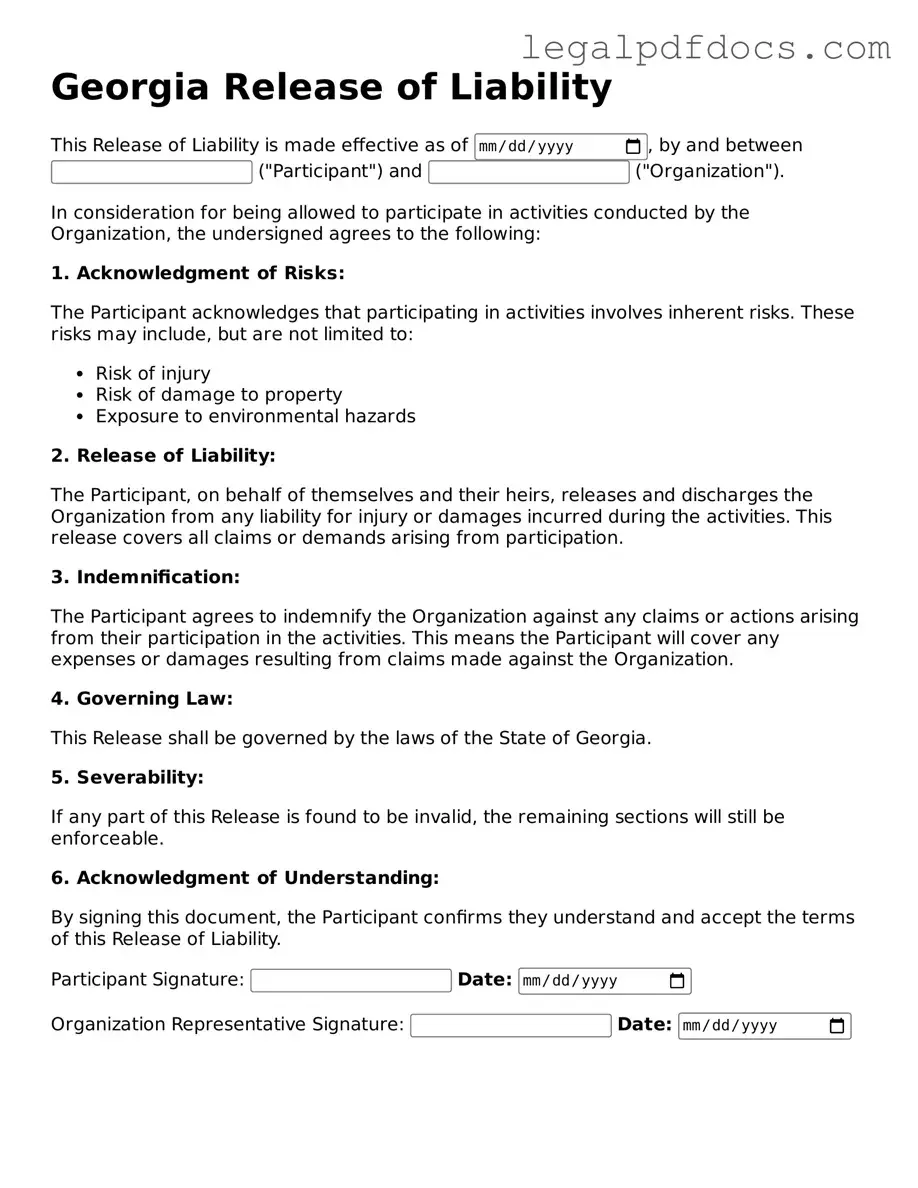In the state of Georgia, the Release of Liability form serves as a crucial document designed to protect individuals and organizations from legal claims that may arise from various activities. Whether it’s a recreational event, a sports activity, or a business operation, this form allows participants to acknowledge the inherent risks involved and voluntarily relinquish their right to sue in the event of an accident or injury. By signing this document, participants affirm that they understand the potential dangers and agree to hold harmless the organizers, sponsors, and facilitators. Key components of the form typically include a clear description of the activity, a statement of risk, and the signatures of all parties involved. Additionally, the form may outline any specific limitations or conditions that apply, ensuring that all participants are fully informed of what they are consenting to. Overall, the Release of Liability form is an essential tool for fostering a safer environment while minimizing legal exposure for those hosting or managing activities in Georgia.
